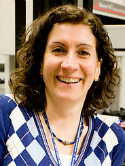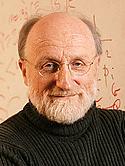(18)F-fluorodeoxy-glucose positron emission tomography marks MYC-overexpressing human basal-like breast cancers Journal Article
| Authors: | Palaskas, N.; Larson, S. M.; Schultz, N.; Komisopoulou, E.; Wong, J.; Rohle, D.; Campos, C.; Yannuzzi, N.; Osborne, J. R.; Linkov, I.; Kastenhuber, E. R.; Taschereau, R.; Plaisier, S. B.; Tran, C.; Heguy, A.; Wu, H.; Sander, C.; Phelps, M. E.; Brennan, C.; Port, E.; Huse, J. T.; Graeber, T. G.; Mellinghoff, I. K. |
| Article Title: | (18)F-fluorodeoxy-glucose positron emission tomography marks MYC-overexpressing human basal-like breast cancers |
| Abstract: | In contrast to normal cells, cancer cells avidly take up glucose and metabolize it to lactate even when oxygen is abundant, a phenomenon referred to as the Warburg effect. This fundamental alteration in glucose metabolism in cancer cells enables their specific detection by positron emission tomography (PET) following i.v. injection of the glucose analogue 18F- fluorodeoxy-glucose (18FDG). However, this useful imaging technique is limited by the fact that not all cancers avidly take up FDG. To identify molecular determinants of 18FDG retention, we interrogated the transcriptomes of human-cancer cell lines and primary tumors for metabolic pathways associated with 18FDG radiotracer uptake. From ninety-five metabolic pathways that were interrogated, the glycolysis, and several glycolysis-related pathways (pentose phosphate, carbon fixation, aminoacyl-tRNA biosynthesis, one-carbon-pool by folate) showed the greatest transcriptional enrichment. This "FDG signature"predicted FDG uptake in breast cancer cell lines and overlapped with established gene expression signatures for the "basal-like" breast cancer subtype and MYC-induced tumorigenesis in mice. Human breast cancers with nuclear MYC staining and high RNA expression of MYC target genes showed high 18FDG-PET uptake (P < 0.005). Presence of the FDG signature was similarly associated with MYC gene copy gain, increased MYC transcript levels, and elevated expression of metabolic MYC target genes in a human breast cancer genomic dataset. Together, our findings link clinical observations of glucose uptake with a pathologic and molecular subtype of human breast cancer. Furthermore, they suggest related approaches to derive molecular determinants of radiotracer retention for other PET-imaging probes. ©2011 AACR. |
| Keywords: | adult; clinical article; controlled study; aged; nonhuman; positron emission tomography; animal cell; animal tissue; gene targeting; gene overexpression; breast cancer; image analysis; transcription initiation; gene function; cancer cell culture; molecular imaging; carcinogenesis; rna synthesis; gene identification; fluorodeoxyglucose f 18; upregulation; folic acid; gene dosage; transfer rna; drug tumor level; glucose transport; glycolysis; oncogene myc; carbon; genetic database; rna analysis; pentose phosphate; carbon fixation; isotope tracing; pentose phosphate cycle |
| Journal Title: | Cancer Research |
| Volume: | 71 |
| Issue: | 15 |
| ISSN: | 0008-5472 |
| Publisher: | American Association for Cancer Research |
| Date Published: | 2011-08-01 |
| Start Page: | 5164 |
| End Page: | 5174 |
| Language: | English |
| DOI: | 10.1158/0008-5472.can-10-4633 |
| PROVIDER: | scopus |
| PMCID: | PMC3148325 |
| PUBMED: | 21646475 |
| DOI/URL: | |
| Notes: | --- - "Export Date: 3 October 2011" - "CODEN: CNREA" - "Source: Scopus" |
Altmetric
Citation Impact
BMJ Impact Analytics
MSK Authors
Related MSK Work














